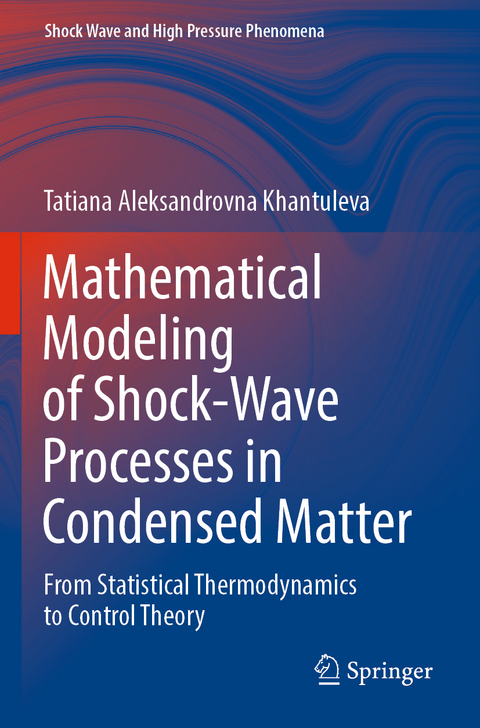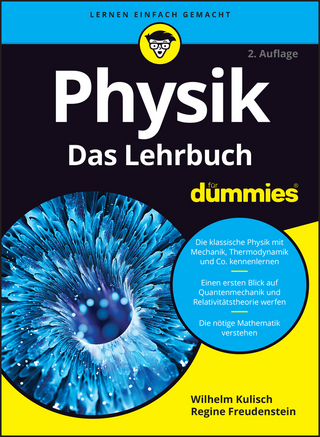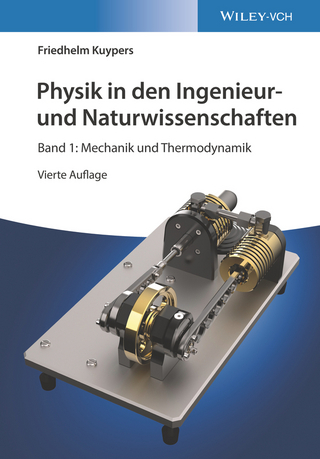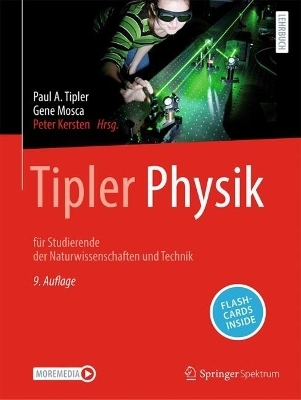
Mathematical Modeling of Shock-Wave Processes in Condensed Matter
Springer Verlag, Singapore
978-981-19-2406-4 (ISBN)
Tatiana Aleksandrovna Khantuleva is a professor at Saint Petersburg State University. Her research is primarily concerned with non-equilibrium phenomena and complex systems and their mathematical modeling. She received her Ph.D. degree in fluid and plasma mechanics from the State Institute of Mathematics and Mechanics, Saint Petersburg, Russia, in 1977. She joined Saint Petersburg State University as an associate professor in 1999 and was promoted to her current position in 2007. She received certificates of honor from Saint Petersburg State University and the Russian Academy of Science in 2007, 2010, and 2017. She currently focuses on the problems related to modeling transient and shock-induced processes, out-of-equilibrium thermodynamic evolution, and synergetic effects at a mesoscopic scale and on developing several new original special courses of lectures for graduate students.
lt;p>Chapter 1 Models of continuum mechanics and their deficiencies
1.1 Description of macroscopic systems; macroscopic variables
1.2 Macroscopic transport equations
1.3 The problem of closure of the transport equations
1.4 Validity of continuum mechanics
1.5 Scale averaging effect on transport processes
1.6 Medium models and transient processes
1.7 The problem of a uniform description of the media motions
1.8 Deficiencies of the continuum mechanics concept
1.9 Short review of approaches to extension of continuum mechanics
Chapter 2 Specific Features of Processes Far from Equilibrium
2.1 Experimental difficulties in studying non-equilibrium processes
2.2 Anomalous medium response to strong impact
2.3 The internal structure effects
2.4 Fluctuations, oscillations, instabilities
2.5 Multi-scale energy exchange between various degrees of freedom
2.6 Multi-stage relaxation processes
2.7 Finite speed of disturbances propagation and the delay effects
2.8 Influence of the loading duration and inertial effects
2.9 Dynamic self-organization of new internal structure in open systems
2.10 Predictive ability of modeling non-equilibrium processes
Chapter 3 Macroscopic Description in Terms of Non-equilibrium Statistical Mechanics
3.1 Fundamentals of statistical mechanics
3.2 Description of macroscopic systems from the first principles
3.3 Main problem of non-equilibrium statistical mechanics
3.4 Rigorous statistical approaches to non-equilibrium processes
3.5 Non-equilibrium statistical operator by Zubarev
3.6 Bogolyubov's hypothesis of attenuation of spatiotemporal correlations
3.7 The nonlocal thermodynamic relationships with memory between the conjugate macroscopic fluxes and gradients
3.8 Two type of the nonlocal effects
3.9 The disadvantages and new opportunities to close transport equations for high-rate processes
Chapter 4 Thermodynamic Concepts Out of Equilibrium
4.1 Basic concepts and principles of thermodynamics
4.2 Linear thermodynamics of irreversible processes
4.3 Revision of the generally accepted thermodynamic concepts out of equilibrium
4.4 Local entropy production near and far from equilibrium
4.5 Total entropy generation and the second law of thermodynamics
4.6 Maximum entropy principle by Jaynes
4.7 Thermodynamic temporal evolution out of equilibrium
4.8 Influence of the constraints imposed on the system
4.9 Self-organization of new structures in thermodynamics
Chapter 5 New Approach to Modeling Non-equilibrium Processes
5.1 Generalized constitutive relationships based on non-equilibrium statistical mechanics
5.2 Modeling spatiotemporal correlation functions
5.3 Temporal stages of the correlation attenuation
5.4 Deficiencies of the generally accepted models for the medium with complicated properties
5.5 Requirements to new approach to modeling shock-induced processes
5.6 Foundations of new approach to modeling transport processes far from equilibrium
5.7 New approach to modeling transport processes far from equilibrium
5.8 Distinctive features of new approach from semi-empirical models
5.9 Interrelationships between spatiotemporal correlations and dynamic structure of the system
5.10 Modeling correlation functions in boundary-value problems
5.11 Boundary conditions for nonlocal equations
5.12 The mathematical basis for the self-consistent problem formulation
5.13 Discrete size spectrum of the dynamic structure of a bounded system
Chapter 6 Description of the Structure Evolution Using Methods of Control Theory of Adaptive Systems
6.1 Methods of control theory in physics. Cybernetical physics
6.2 Speed gradient principle by Fradkov for non-stationary complex systems
6.3 Description of the system temporal evolution at macroscale level
6.4 Temporal evolution of statistical distributions at microscale
6.5 The need to describe temporal evolution out of equilibrium at mesoscale
6.6 Principle of maximum entropy by Jaynes and the goal function of the structure evolution
6.7 Integral entropy production and reduction of irreversible losses due to self-organization
6.8 Internal control at mesoscale based on Speed gradient principle
6.9 Paths of the system evolution and prediction of the limit states
6.10 Influence of feedbacks on the paths of the system evolution
Chapter 7 The Shock-Induced Planar Wave Propagation in Condensed Matter
7.1 Thermodynamic properties of solids
7.2 Wave processes in crystal lattice
7.3 Elastic properties of solids
7.4 Plastic deformation. Deficiencies of continuum mechanics
7.5 Shock wave as a non-equilibrium transient process
7.6 The integral model for the stress tensor without separation into elastic and plastic parts
7.7 Integral formulation of the problem of the shock-induced wave propagation in condensed matter
7.8 Self-similar quasi-stationary solution to the problem
7.9 The relaxation model of shock-induced waveforms during propagation
7.10 Comparison of the model waveforms with experimental data
Chapter 8 Evolution of Waveforms during Propagation in Solids
8.1 Entropy production in finite-time waveforms
8.2 Speed gradient principle for the waveforms evolution
8.3 The waveform evolution during quasi-stationary wave propagation
8.4 Paths of the waveform evolution on a surface of the entropy production over a phase plane
8.5 Coincidence with experimental results
Chapter 9 Abnormal Loss or Growth of the Wave Amplitude
9.1 Dependence of the waveform amplitude on the impact velocity
9.2 The wave amplitude loss due to various relaxation effects
9.3 Interference of shock wave at mesoscale
9.4 Wave packet spreading
9.5 Mass velocity dispersion and turbulent effects
9.6 Multi-scale momentum and energy exchange in wave processes
9.7 Self-organization and the structure instability
Chapter 10 The Stress-Strain Relationships for the Continuous Stationary Loading
10.1 Difference between shock and continuous loading at the same amplitude
10.2 Influence of the relaxation and delay effects on the medium response to short and long loading
10.3 Entropy production surfaces for various duration loading and possible evolutionary paths
10.4 Meta-stable states and the system structural instability
10.5 Probable change of the evolution paths and their direction
10.6 Dependence of final states on the initial and loading conditions
10.7 Influence of the feedbacks between the structure evolution and the material response
10.8 Control of the evolution paths to obtain the desired structure of the material
| Erscheinungsdatum | 22.07.2023 |
|---|---|
| Reihe/Serie | Shock Wave and High Pressure Phenomena |
| Zusatzinfo | 58 Illustrations, color; 19 Illustrations, black and white; XV, 336 p. 77 illus., 58 illus. in color. |
| Verlagsort | Singapore |
| Sprache | englisch |
| Maße | 155 x 235 mm |
| Themenwelt | Naturwissenschaften ► Physik / Astronomie ► Allgemeines / Lexika |
| Naturwissenschaften ► Physik / Astronomie ► Mechanik | |
| Naturwissenschaften ► Physik / Astronomie ► Theoretische Physik | |
| Naturwissenschaften ► Physik / Astronomie ► Thermodynamik | |
| Technik ► Maschinenbau | |
| Schlagworte | Control Theory in Adaptive Systems • Elastic-Plastic Transition • Entropy Generation • High-Rate Processes • Internal Structure Evolution • Mathematical Modeling • non-equilibrium thermodynamics • Non-local and Memory Effects • Self-Organization • Shock-Induced Processes in Solids • Speed-Gradient Principle • Waveform Evolution |
| ISBN-10 | 981-19-2406-6 / 9811924066 |
| ISBN-13 | 978-981-19-2406-4 / 9789811924064 |
| Zustand | Neuware |
| Haben Sie eine Frage zum Produkt? |
aus dem Bereich


